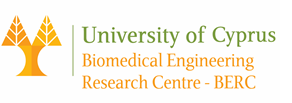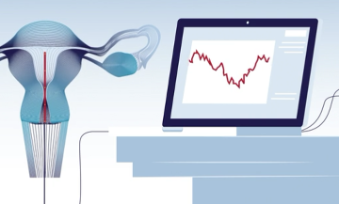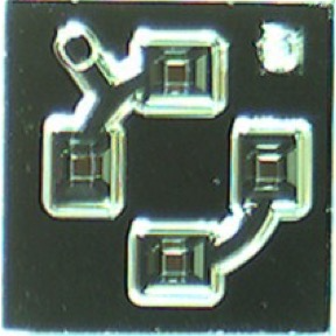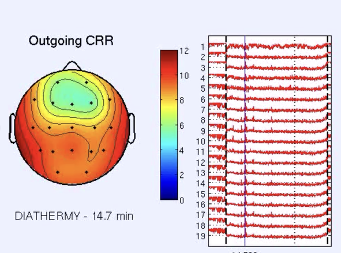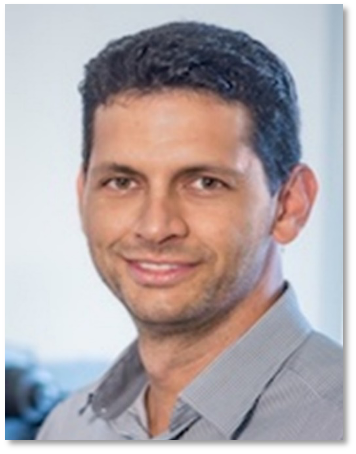 |
BIOMEDICAL ELECTRONICS AND SENSING |
"Electronics for Improved Quality of Life"Julius Georgiou (IEEE M’98-SM’08) is a Professor of Electrical and Computer Engineering at the University of Cyprus. He received his M.Eng degree in Electrical and Electronic Engineering and Ph.D. degree from Imperial College London in 1998 and 2003 respectively. For two years he worked as Head of Micropower Design in a technology start-up company, Toumaz Technology. In 2004 he joined the Johns Hopkins University as a Postdoctoral Fellow, before becoming a faculty member at the University of Cyprus from 2005 onwards. In parallel, he has been involved in the founding of multiple medical device startup companies, based on patents stemming from his research. He has 26 years of experience in designing electronics and sensors for medical devices, that include cochlear and vestibular implants, ingestible electronic capsules, portable vitals monitoring systems and electronics for femtech applications. He has been involved in numerous projects in these areas funded by EU and other bodies, and regularly serves as an expert project monitor for EU Commission funded projects in the area. He has published 62 journal publications and 107 conference papers. Professor Julius Georgiou Member of Biomedical Engineering Research Center, Director of the Holistic Electronics Research Lab @ Department of Electrical and Computer Engineering @ University of Cyprus
georgiou.julius-AT-ucy.ac.cy; (+357) 22 892264
|
Advancing health technology via:Novel Medical-electronic Systems
The non-pregnant uterus has rhythmic contractile activity that varies during women’s monthly cycle, however assessing this contractility has been limited to using MRI based methods and to a certain extent ultrasound, both which have not made their way into the clinical scene, due to their cost, complexity and subjectivity. My group in collaboration with a clinician, has developed the ElectroUteroGraph, which makes contractility assessment straightforward through using an innovative electrode array that is placed in the non-pregnant uterus with the use of an embryo transfer catheter. The technology has a patent pending. The IP has been purchased from the University of Cyprus by Gynetronics Ltd, (WO2020202108, US20200315593, EP3946039), which will commercialize the technology.
Concept of ElectroUteroGraph Recording Contractility Data from with the Uterus
▪ A Wearable, Multimodal, Vitals Acquisition Unit for Intelligent Field Triage Cyprus In the last decade there has been an increase of terrorist attacks around the world, whereby there are many injured and not enough emergency first responders available so as to be able to treat all that are affected. As such a system is required, whereby multiple casualties can have important parameters monitored wirelessly with a portable device so as to enable more efficient field triage. In this project a small electronic monitoring unit was designed and built that can collect ECG, pulse oximetry and lung and heart auscultation data and relay this to the first responders to enable real-time field monitoring and triage
Chip Microphotograph of Bioinspired Microfluidic Gyroscope Measuring 5mm x 5mm ▪ Ultra-low Power Imager for Neural Prosthetic Vision Systems Imagers have become abundant in our society (phones, surveillance… etc.), however not much emphasis has been given to extreme low power imaging, which is a requirement for future implants that will enable bionic vision for the blind. By leveraging on the holistic philosophy of the lab, a complete QCIF imager-on-chip (no external components other than power supply), was designed and fabricated in a 0.18μm TSMC process. At a frame-rate of 20fps, this imager consumes 115μW and received a best paper award making it easy to power it via an energy scavenging device. Note that, at 270pJ/pixel, the energy per pixel, figure-of-merit, is about one-third of that of other low-power QCIF imager chips.
Microphotograph of Ultra-low power Imager chip |
▪ Acoustic Scene Analysis for detecting living entities Within a multinational FP7 project, a unique hardware suite, along with associated software for acoustic scene analysis was created in order to be able to monitor elderly within a home environment without losing privacy through imaging cameras. This system included multiple acoustic sensory nodes with synchronized sampling, in order to identify and track people within a space, purely acoustically; via ground vibrations and via ultrasound in air. The system was shown distinguish people via gait analysis but also detect actions such as fall, limping etc.
▪ Monitoring of Awareness During Anaesthesia Anaesthesia is a reversible state of drug-induced unconsciousness. During surgery, the administration of the anaesthetic drugs is accompanied with a neuromuscular blocking agent to prevent patient movements. It is possible that the patient becomes conscious during surgery, but due to the neuromuscular blocking agent, cannot make this evident. In this research we developed methods that use EEG signals to assess the depth of anaesthesia, with ultimate aim to produce a hardware solution that will be used in operating theatres. Data was collected from patients undergoing general surgery at the Nicosia General Hospital. Automatic classification based on methods using Granger Causality gave an average accuracy of over 95%, which is well above that of commercially available devices.
Display of Depth of Anaesthesia Metrics During Surgery
|
|
SELECTED PUBLICATIONS1. J. Georgiou, K. Lekkas, G. Varnava, M. Sophocleous, A. Michaelides and V. Tanos, “The ElectroUteroGraph: A Novel Tool for Assessing Uterine Contractions of Non-Pregnant Women”, IEEE Open Journal of Engineering in Medicine and Biology, https://doi.org/10.1109/OJEMB.2022.3159097 2. C. Beck and J.Georgiou, “A Wearable, Multimodal, Vitals Acquisition Unit for Intelligent Field Triage”, IET Healthcare Technology Letters, 22nd September 2016. 3. P. Demosthenous, C. Pitris and J. Georgiou, “Infrared fluorescence-based Cancer Screening Capsule for the Small Intestine”, IEEE Transactions on Biomedical Circuits and Systems, 2015, DOI:10.1109/TBCAS.2015.2449277 4. K.N. Hageman, Z.K. Kalayjian, F. Tejada, B.Chiang, M.A. Rahman, G.Y. Fridman, C. Dai, P.O. Pouliquen, J. Georgiou, C.C. Della Santina, and A.G. Andreou, “A CMOS Neural Interface for a Multichannel Vestibular Prosthesis”, IEEE Transactions on Biomedical Circuits and Systems, 2016, DOI:10.1109/TBCAS.2015.2409797 5. J. Georgiou and C. Toumazou ,“A 126-W Cochlear Chip For a Totally Implantable System,” IEEE Journal of Solid-State Circuits, Vol. 40 , No. 2 , pp. 430 – 443, February 2005
|
